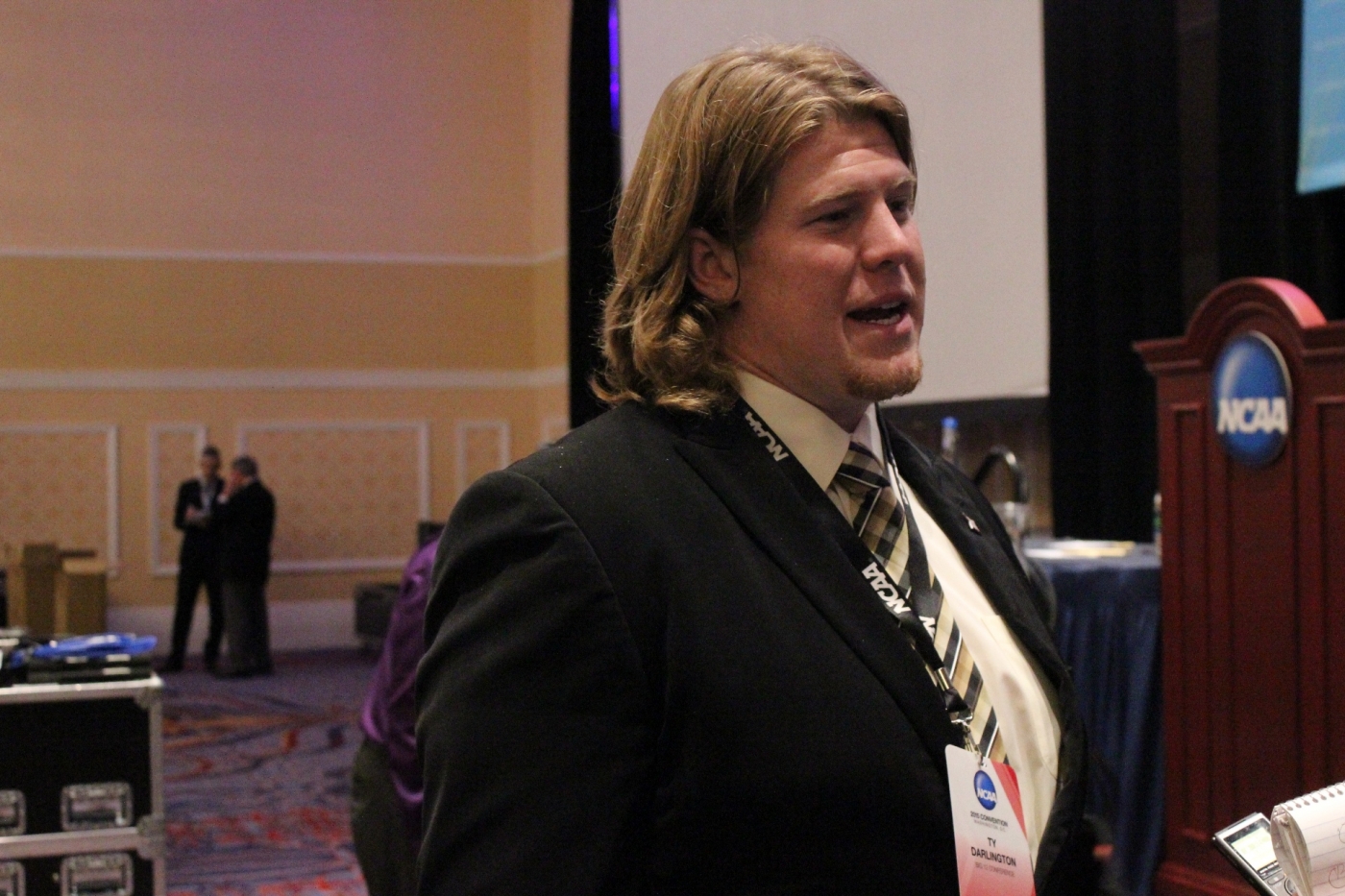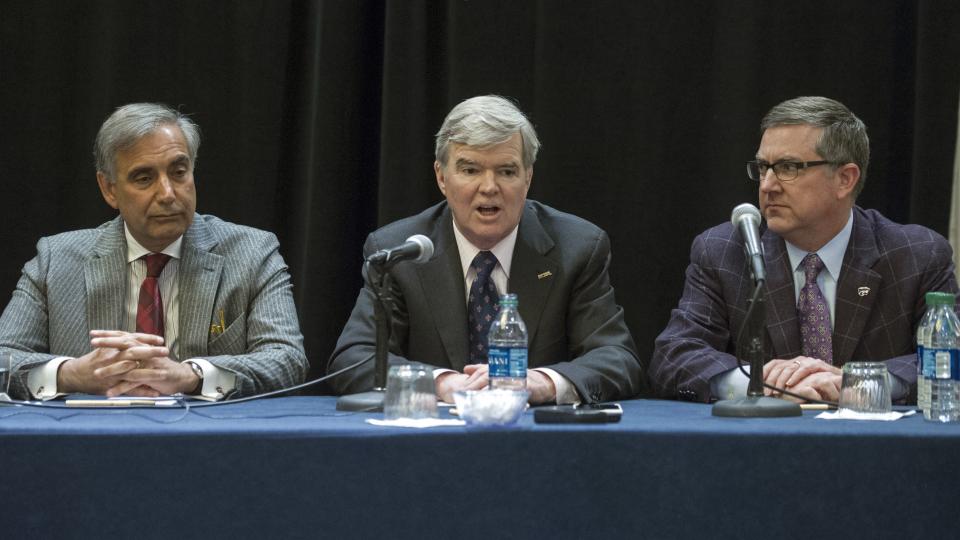While the glitz and glamour of college football’s national championship game is just fading, the NCAA has begun to consider changes in how future football champions are made, along with other issues concerning college athletic programs. While questions like whether the Big 12 can have a football championship game with only 10 teams or have to expand to 12 like other conferences are certainly important to the landscape of collegiate competition, the individual needs of student-athletes this year took a backseat to the issues of the programs they make successful.
The NCAA has a student-athlete advisory committee comprised of 15 representatives who attend the annual meeting. This year, that committee’s primary issue on the agenda concerned the time demands placed on student-athletes by their respective sports.
In the opening business session of the conference, Harris Pastides, Chair of the NCAA Division I Board of Directors, said that time demands on student-athletes is the most challenging issue facing the Division. Yet, when the conference closed, the “challenge” had been tabled to allow NCAA leaders more time to consider further research on the topic.
A survey of over 30,000 student-athletes across all three NCAA divisions reported that less than half of those surveyed said they would rather spend more time on academics. But that forty percent may be comprised of those who have no illusions about the likelihood of going pro in their respective sports. The other sixty percent choose to spend time away from required athlete activities – and, apparently, academics — practicing and training for their sport beyond what is required in an attempt to excel in the sports world. While NCAA rules allow a maximum of 20 hours of required activity of a student-athlete each week, many of those athletes are taking it on themselves to exceed those hours, possibly due to what is often a pipe dream that they can make a living as a professional athlete, regardless of what statistics say.
Periodically, the NCAA conducts a GOALS (Growth, Opportunities, Aspirations and Learning of Students in College) study with questions answered by current student-athletes to examine their perspectives on experiences and well-being. The study was previously compiled in 2006 and 2010.
In the study released as the meeting convened, players in the FBS answered that they spend 42 hours per week practicing and preparing for football. Obviously, this is more than the commitment of many Americans to a forty-hour work week – and over twice the number of hours allowed by the NCAA in “required” activities. And it isn’t just during the season: two-thirds of Division I FBS athletes said that they spend at least that much time on athletics during their off-season. And nearly a third answered that they had not enrolled in an academic course because it was scheduled at a time that would interfere with their commitment to football.
Regardless of these statistics which should be of concern to NCAA officials, the majority decided that the concerns can wait another year for resolution. While leaders of athletic departments used words such as “rebalance” and “recalibration” in regard to the need for new rules, those seem to be words to be defined at a later date.
Unfortunately, time that could have been allotted to more discussion of this issue was invested in platitudes from guest speakers such as Condoleezza Rice and Peter Ueberroth. While events with such dignitaries are a natural part of the agenda at practically any meeting, summaries of their respective presentations included Ueberroth’s claims that, had he not gone to college on an athletic scholarship, he wouldn’t have met his wife or been Commissioner of Major League Baseball. Rice encouraged athletic administrators, college presidents and student-athletes to remember that education can transform a life and the time allotted to academic endeavors should be as important as their athletic activities.
 Oklahoma student-athlete, Ty Darlington
Oklahoma student-athlete, Ty Darlington
Mark Emmert, the President of the NCAA, said that intercollegiate athletics are “in a good place” but work still needs to be done. One of the student representatives felt differently. Ty Darlington, the starting center for the Oklahoma Sooners, left the meeting feeling that the result differed from the significant decisions that were made at the 2015 meeting. Other attendees described the outcome of the convention of “milquetoast” and “rooted in minutia”.
While the issue of time demands was not resolved, some progress was made on a few other issues that directly affect student-athletes. Those include:
- Schools may pay expenses for up to four family members when recruits make official visits to campus (although the cost of airplane tickets are not included in those expenses);
- Schools may waive application fees and housing deposits for signed recruits;
- Walk-ons may earn scholarships on a semester-by-semester basis; and
- Student athletes may purchase extra tickets to championship events at face value in addition to the complementary ones they receive.
These rules seem trivial when compared to the question of time demands on student-athletes. But at least one rule passed that does directly affected their health and well-being: each school’s medical personal will now have autonomy on return-to-play decisions after an injury. Whether this will improve issues regarding concussions and other health concerns remains to be seen.



Leave a Reply
You must be logged in to post a comment.